Scientific papers 2015









Author: Nick Bailey (UK Health and Safety Laboratory)
This report can be considered a Key study regarding gas
consumption in an emergency and is taken as a reference
in the publications CCO Ltd and Diving & ROV specialists
regarding the calculation of the range offered by bailouts.
This document can be downloaded from our server by
clicking on the picture of the cover, or from the UK HSE
server by clicking on the text.
UK HSE address: hse.gov.uk/research/rr1073

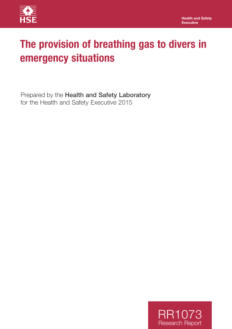

Authors: Jacek Kot & Zdzislaw Sicko
Most operational procedures rely on experimentally found
parameters describing a continuous slow decompression
rate. In Poland, the system for programming continuous
decompression after saturation with compressed air and
nitrox has been developed based on the Extended
Oxygen Window (EOW) concept. EOW mainly depends
on the physiology of the metabolic oxygen window, also
called inherent unsaturation or partial pressure vacancy,
but also on the metabolism of carbon dioxide, the
existence of water vapor, as well as tissue tension.
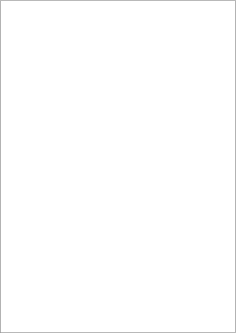


Authors: Alain Boussuges & Frauke Tillmans
Ultrasonic methods enable visualization of microbubbles
in the heart and vessels after diving. Common detection
techniques include Continuous Wave Doppler,
Transthoracic Echocardiography, Pulsed Doppler, and
Transesophageal Echocardiography. Counting and
grading bubbles post-dive help validate dive tables and
assess preconditioning methods, enhancing dive safety.
Various scales exist to categorize bubble quantities, but
while valuable for research, bubble counting has limited
clinical use and uncertain value for individual
decompression sickness (DCS) risk assessment.


Authors: David J. Doolette, Keith A. Gault, wayne A. Gerth
Heliox (He-O2 ) enables diving deeper than limits imposed
by breathing N2-O2, but heliox has some costs, and
several navies have pursued a trimix (He-N2-O2) diving
capability as an alternative to heliox. It is widely believed
that trimix bounce dives can be conducted with
substantially reduced decompression times than
corresponding heliox dives. If this were true, trimix would
be an attractive alternative to heliox for U. S. Navy MK 16
MOD 1 underwater breathing apparatus (UBA) diving.
However, there is no direct evidence of greater
decompression efficiency of trimix than of heliox.

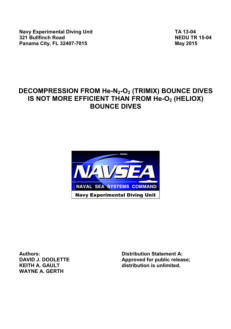

Authors
Dror Tal, Hofit Shachar-Bener, Dov Hershkovitz, Yehuda
Arieli, & Avi Shupak
Mass stranding of cetaceans (whales and dolphins), in
close association with the activity of naval sonar systems,
has been reported on numerous occasions. Necropsy
showed associated bubble lesions similar to those
described in human decompression sickness (DCS). The
authors examined the hypothesis that exposure to
underwater sound may potentiate DCS.



Authors:
Arve Lie, Marit Skogstad, Håkon A. Johannessen, Tore
Tynes, Ingrid Sivesind Mehlum, Karl-Christian Nordby, Bo
Engdahl, Kristian Tambs.
This document gives a systematic review of the
development of noise-induced hearing loss (NIHL) in
working life. It can be used as a complement to the papers
more specialized on noise harm linked to diving
operations.
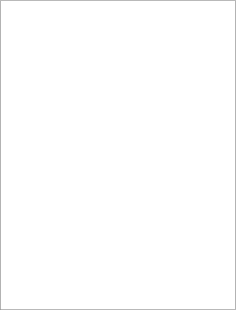
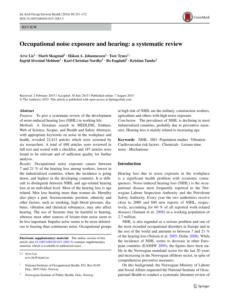

Authors: Mircea Degeratu, Simona Rus, Ana Ion.
The improvement of the efficiency of diving interventions
at depths greater than 15m has brought into focus the
problem of increasing underwater working time by using
over-oxygenated synthetic breathing mixtures to optimize
the relation between working time and duration of
decompression. The “nitrox” binary mixture best meets
diving requirements at depths within the range of 15 to
50 meters.


Authors: Sigrid Theunissen, Costantino Balestra, Antoine
Boutros, David De Bels, François Guerrero, and
Peter Germonpré
The study aimed to observe the effects of dark chocolate
on endothelial function after scuba diving.
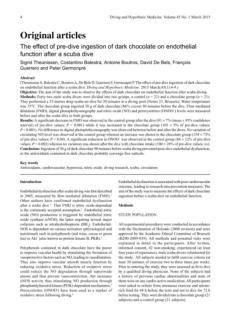

Authors: Ran Arieli, Uri Arieli, & Abraham Marmur.
Bubbles nucleate and develop after decompression at
active spots on the luminal aspect of ovine large blood
vessels. A Series of bubbles were shown to detach from
the active spot with a mean diameter of 0.7–1.0 mm in
calm conditions. The effect of mechanical disturbance
(striking the bowl containing the vessel or tangential flow)
was studied on ovine blood vessels stretched on
microscope slides and photographed after hyperbaric
exposure.
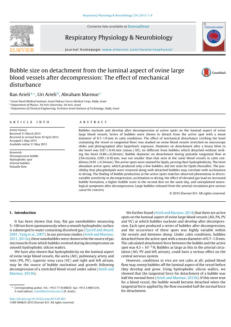

Stephen R. Thom, Michael Bennett, Neil D. Banham,
Walter Chin, Denise F. Blake, Anders Rosen, Neal W.
Pollock, Dennis Madden, Otto Barak, Alessandro Marroni,
Costantino Balestra, Peter Germonpre, Massimo Pieri,
Danilo Cialoni, Phi-Nga Jeannie Le, Christopher Logue,
David Lambert, Kevin R. Hardy, 1Douglas Sward, Ming
Yang, Veena B. Bhopale, and Zeljko Dujic.
The authors hypothesized that the number of blood-
borne, Annexin V-positive Circulating microparticles (MPs)
and neutrophil activation, assessed as surface MPO
staining, would differ between self-contained underwater
breathing-apparatus divers suffering from DCS vs.
asymptomatic divers.
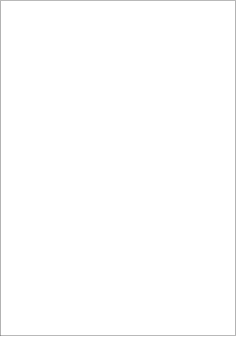


Authors
Ming Yang, Otto F. Barak, Zeljko Dujic, Dennis Madden,
Veena M. Bhopale, Jasjeet Bhullar, and Stephen R. Thom
Predicated on evidence that diving-related microparticle
generation is an oxidative stress response. This study
investigated the role that oxygen plays in augmenting the
production of annexin V-positive microparticles associated
with open-water SCUBA diving and whether elevations
can be abrogated by ascorbic acid.



Authors
C. Balestra, F. Cimino, S. Theunissen, T. Snoeck, S. Provyn, R.
Canali, A. Bonina, and F. Virgili
Nutritional antioxidants have been proposed as an
expedient strategy to counter the potentially deleterious
effects of scuba diving on endothelial function, flow-
mediated dilation (FMD), and heart function. Sixteen
volunteers performing a single standard dive (20 min at 33
m) according to US Navy diving procedures were
randomly assigned to two groups: one was administered
with two doses of 200 mg of an anthocyanin (AC)-rich
extract from red oranges, 12 and 4 h before diving.
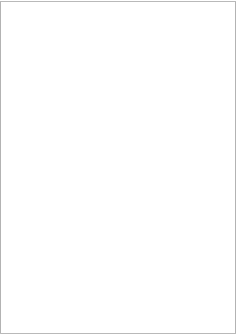
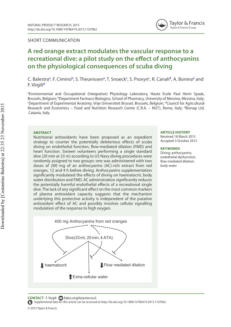

Authors: Mircea Degeratu, Simona Rus, & Ana Ion
Improving the efficiency of interventions made with divers
at depths greater than 15m has brought into focus the
problem of increasing underwater working time by using
over-oxygenated synthetic breathing mixtures in order to
optimize the relation between working time and duration
of decompression. The "NITROX" binary mixture best meets
the requirements of diving at depths within the range of
15 to 50 meters. NITROX is used for depths in the range of
15 to 50 m. When this mixture is used, the decompression
time shortens and the respiratory resistance decreases.
Therefore, the use of NITROX leads to an improvement in
diving efficiency, by increasing underwater working time,
and by reducing the decompression time
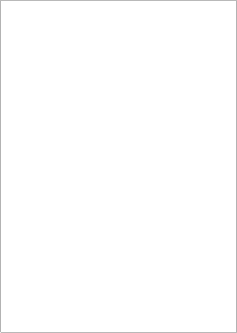


Authors: Gonglin Hou, Youlan Zhang, Na Zhao, Ruiyong
Chen, Weibing Xiao, Hao Yu, Jiachun Wang, and
Ti-Fei Yuan.
The present study investigated the cognition and
performance efficacy of four divers during a simulated 480
meters helium–oxygen saturation diving. The authors
analyzed the spatial memory, 2D/3D mental rotation
functioning, grip strength, and hand–eye coordination
ability in four divers during the 0–480 m compression and
decompression processes of the simulated diving.
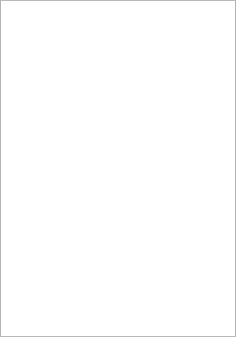
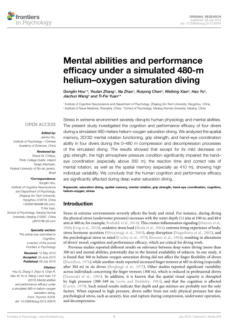

Author: Ronald W. Day
Pulmonary hypertension is a serious disease associated
with constriction, cellular hypertrophy and proliferation,
inflammation, and in situ thrombosis of the small vessels of
the pulmonary circulation. Patients often respond more
favorably to long-term treatment if their pulmonary
vascular resistance decreases during acute vasodilator
testing during heart catheterization.
However, the response to short acting agents may not
predict the long-term response to medications that act on
different pathways of signal transduction. The acute
hemodynamic effects of oxygen with nitric oxide and
diltiazem were not similar in a previous study
of patients with pulmonary hypertension.
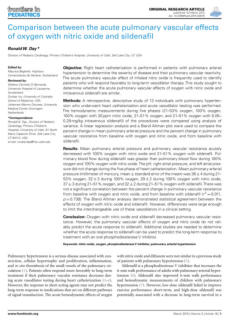

Authors:
Sebastian Schulz-Stübner, Petra Zimmer, Peter Leonards
Hyperbaric oxygen therapy (HBOT) is a non-invasive
treatment that involves breathing pure oxygen in a
pressurized room or tube.
HBOT can be used for chronic wound-healing problems,
soft-tissue infections, gas gangrene, and as an emergency
treatment for diving decompression sickness or carbon
monoxide poisoning.
Multiplace hyperbaric therapeutic chambers can
accommodate several patients at once, allowing contact
among patients who may be infected or colonized.

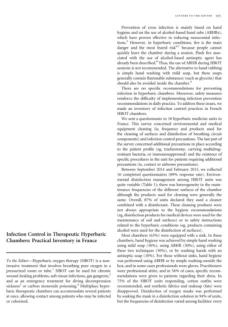

Authors:
Syeda Rubina Gilani, Madiha Batool, Syed Raza Ali Zaidi,
Zaid Mahmood, Amanat Ali Bhatti, and Arjumand Iqbal
Durrani
This study explains the chronic effect of heavy toxic metals
on the nervous system.
During experimentation, rabbits used as laboratory
animals were given test metals in their diet. The
concentration of metals given to them in the diet was less
than their tolerable dietary intake. Behavioral changes
were observed during experimentation. A periodic
increase in the metal concentration was seen in the blood
sample of rabbits.

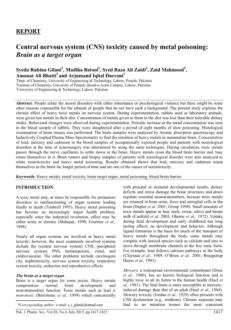

Author: Tuomo T. Tompuri
Physical activity refers to any bodily movements produced
by skeletal muscles that expends energy. Hence the
amount and the intensity of physical activity can be
assessed by energy expenditure. Metabolic equivalents of
task (MET) are multiplies of the resting metabolism
reflecting metabolic rate during exercise. The standard
MET is defined as 3.5 ml/min/kg. However, the expression
of energy expenditure by body weight to normalize the
size differences between subjects causes analytical
hazards: scaling by body weight does not have a
physiological, mathematical, or physical rationale.
This review demonstrates that a false methodology may
cause paradoxical observations.



Authors: Barbara E. Shykoff
A two-part residual oxygen time model predicts the
probability of detectible pulmonary oxygen toxicity P(P[O 2
tox]) after dives with oxygen partial pressure (PO2) of
approximately 130 kPa and provides a tool to plan dive
series with selected risk of P[O2 tox]. Data suggest that
pulmonary oxygen injury at this PO2 is additive between
dives. Recovery begins after a delay and continues during
any following dive.
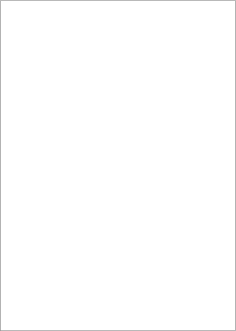


Authors:
Claire Masterson, Gail Otulakowski, and Brian P. Kavanagh
Multiple clinical and laboratory studies have been
conducted to illustrate the effects of hypercapnia in a
range of injuries, and to understand the mechanisms
underlying these effects. The aim of this review is to
highlight and interpret information obtained from these
recent reports and discuss how they may inform the
clinical context.

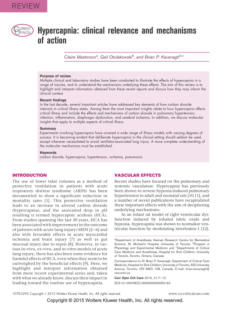

Authors:
Martyna Krukowska, Katarzyna Janczuk, Anna Slifirczyk,
Marta Kowalenko
Pulmonary barotrauma consists in the damage of
pulmonary tissues resulting from pressure differences in
the body and the surroundings.
Barotrauma may occur during diver's ascent with a held
breath.
Objective: Presentation of symptoms in divers performing
dives at shallow depths. A detailed description of
pulmonary barotrauma as a direct hazard to life. Rescue
procedure in the case of an occurrence of pulmonary
barotrauma, methods of prevention.



Authors:
Denise F. Blake, Derelle A. Young, and Lawrence H.
Brown
Hyperbaric nursing has become a specialty requiring high
skill and knowledge. Nitrogen narcosis is a perceived risk
for all inside hyperbaric chamber nurses. The actual
degree of impairment at pressure has not been quantified.
Twenty eight subjects participated in the study.
Sixteen hyperbaric nurse candidates and five experienced
hyperbaric nurses completed Trail Making Test A (TMTA)
pre and post compression and at 180 kPa and 300 kPa.



Authors: Guillaume Costalat, Aurélien Pichon, Fabrice
Joulia, Frédéric Lemaître
Although it has been demonstrated that the exponential
decay model fits the heart rate kinetics in short static
breath holding, this model might be inaccurate when
breath is maintained for several minutes. The aim of this
study was to build a new meaningful model to quantify
heart rate kinetics during prolonged static breath holding.
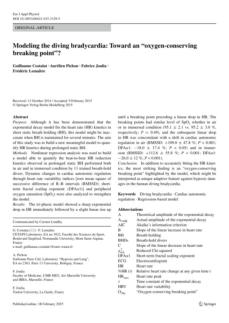

Authors:
Jacek Kot, Zdzislaw Sicko, Tadeusz Doboszynski
Saturation decompression is a physiological process of
transition from one steady state, full saturation with inert
gas at pressure, to another one: standard conditions at
surface. It is a delicate and long lasting process during
which single milliliters of inert gas are eliminated every
minute, and any disturbance can lead to the creation of
gas bubbles leading to decompression sickness (DCS). In
Poland, the system for programming of continuous
decompression after saturation with compressed air and
nitrox has been developed as based on the concept of the
Extended Oxygen Window (EOW).

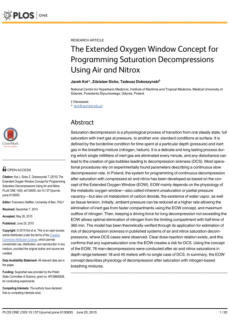

Authors: Simon J Mitchell, & David J Doolette
A large right-to-left shunt (usually a persistent foramen
ovale) is found in a disproportionate number of DCS cases,
suggesting that shunted venous gas emboli (VGE) cause
injury to the inner ear. However, this seems an incomplete
explanation for the relationship between inner-ear DCS
and right-to-left shunt. The brain must concomitantly be
exposed to larger numbers of VGE, yet inner ear DCS
frequently occurs in the absence of cerebral symptoms.
This may be explained by slower inert gas washout in the
inner ear than in the brain. Thus, there is a window after
surfacing within which VGE arriving in the inner ear (but
not the brain) would grow due to inward diffusion of
supersaturated inert gas.

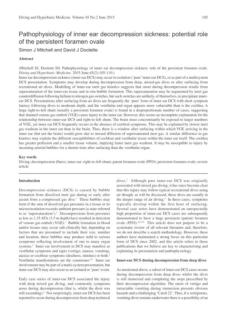

Authors: Nico AM Schellart and Jean-Claude Le Péchon
The authors aimed to develop a simple but precise
method for calculating the instantaneous gas
consumption during a dive.
With gas thermodynamics and water/gas heat transfer,
the instantaneously released gas mass was modeled. In
addition, five subjects made an open-water, air, open-
circuit scuba dive to 32 metres of seawater. Depth,
cylinder pressure, and water temperature were recorded
using a dive computer, and gas consumption was
calculated and compared using different methods.
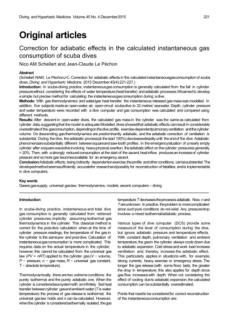

Authors: Trientje B Santema, Robert M Stoekenbroek,
Koen C van Steekelenburg, Rob A van Hulst,
Mark JW Koelemay and Dirk T Ubbink
The authors searched multiple electronic databases in
March 2015 for cohort studies and randomised clinical
trials (RCTs) that reported on the clinical eff ectiveness
andtreatment costsof HBOT in the treatmentof acuteor
chronic wounds.


Authors: Simin Berenji Ardestani, Peter Buzzacott and
Ingrid Eftedal
The aim of this study is to elucidate the possible outcomes
of the interplay between exogenous and endogenous
stress factors on endothelial function and to question
potential implications for cardiovascular health in the
aging diver.
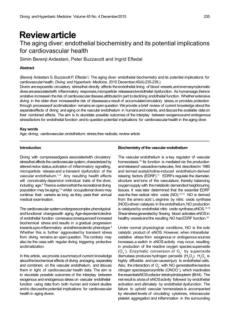

Authors: Pashtun Shahim, Per Arnell, Andreas Kvarnström,
Anders Rosén, Daniel Bremell, Lars Hagberg, Ka
Blennow and Henrik Zetterberg
Decompressionsickness(DCS) may cause a wide variety of
symptoms, including central nervous system (CNS)
manifestations. The main objective of this study was to
examine whether DCS is associated with neuronal injury,
andwhether DCScould result in altered amyloid
metabolism.
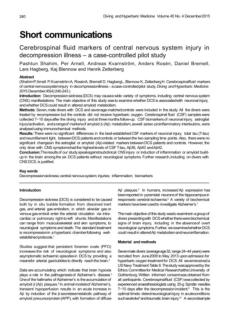

Authors: Christopher Sames, Desmond F Gorman, Peter
Sandiford and Lifeng Zhou
To compare Australian and New Zealand (NZ) rates of
referral to hyperbaric units for patients with, or at risk of
developing mandibular or maxillary osteoradionecrosis
(ORN) due to ahistory of radiotherapy for oropharyngeal
cancer.
Relevant patient treatment data from all hyperbaric units
in Australia and NZ were collated and analysed.


Authors: Kasper Hansen, Esben SS Hansen, Lars P Tolbod,
Martin C Kristensen, Steffen Ringgaard, Alf O
Brubakk and Michael Pedersen
The authors describe the development of a novel
preclinical rodent-sized pressure chamber system
compatible with computed tomography (CT), positron
emission tomography (PET) and magnetic resonance
imaging (MRI) that allows continuous, uncompromised,
and minimally invasived at a acquisition throughout
hyperbaric exposures.The effect of various pressures on
the acquired image intensity obtained with different CT,
PET and MRI phantoms are characterised.


Authors: Andrew Ng, and Carl Edmonds
A 67-year-old female scuba diver developed a typical
immersion pulmonary edema (IPE), but investigations
strongly indicated Takotsubo cardiomyopathy (TC). The
cardiac abnormalities included increased cardiac enzymes,
electrocardiographic anomalies, and echocardiographic
changes,all reverting to normal within days. This
casedemonstratesa similarity and association between IPE
and TC, and the importance of prompt cardiac
investigations both in the investigation of IPE and in
making the diagnosis of Takotsubo cardiomyopathy (TC).
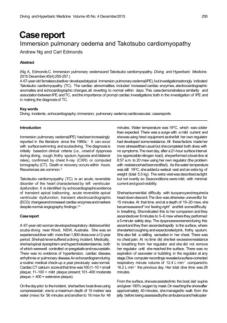

Authors: Lars Eichhorn, & Dieter Leyk
The authors reviewed literature from PubMed, a well-
known scientific database, on various aspects of diving,
including free and scuba diving, medical evaluations,
barotrauma, decompression sickness, and diving with
medical risks. In conclusion, physicians who certify diving
fitness must have a thorough understanding of the
physical and physiological impacts of diving, as well as
how to evaluate divers medically.
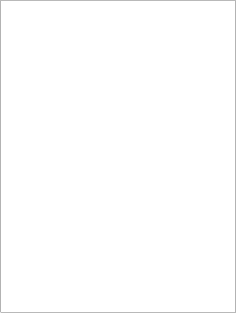
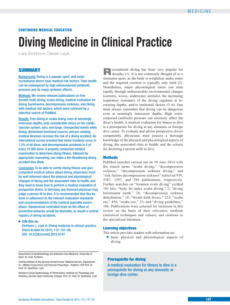

Author: Nick Bushell
Currently, no decompression algorithm can guarantee
safe decompression in all diving scenarios. Typically,
experienced divers or organizations make empirical
adjustments to decompression profiles based on the
specific dive conditions. Decompression sickness primarily
results from bubble formation in the body, suggesting that
improved modeling of these processes could enhance the
algorithm design. The Study Group aimed to refine the
Haldane model by incorporating bubble dynamics,
hoping to better understand the physical basis for existing
parameter modifications.

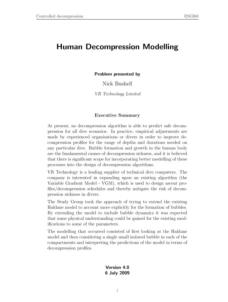

Authors: Dariusz Jozwiak, Piotr Siermontowski, Zbigniew
DabrowieckiI, Romuald Olszanski
Based on data analysis of diving accidents, this study raises
the critical question of why recreational diving
experiences more accidents than military diving. It
evaluates factors such as diving frequency, adaptation to
pressure, and overestimation of skills that contribute to
higher incident rates in recreational divers compared to
military divers.
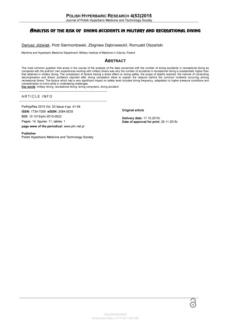
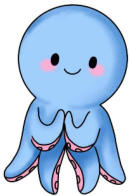

Click on the octopus
to return to the top
of the page

Authors: Saul Goldman, J.M. Solano-Altamirano
This study investigates the behavior of arterial gas
embolisms (AGEs) during and after breath-hold diving. It
uses a diffusion model to analyze AGE growth and
dissolution in different types of breath-hold dives,
including single deep competitive dives and repetitive
shallower dives, to explain the occurrence of cerebral and
inner ear decompression sickness in these diving scenarios
and highlight the importance of surface intervals in
preventing such conditions in repetitive dives.
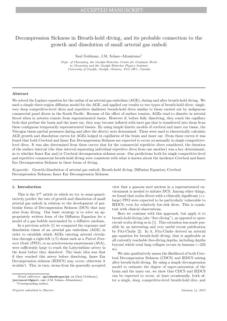

Authors: Anahita Fathi-Azarbayjani, Abolghasem Jouyban
This paper discusses the significance of surface tension
measurements of human biological fluids in
understanding and diagnosing various diseases. It outlines
how changes in surface tension are linked to pathological
states and suggests that these measurements, combined
with routine lab tests, could become a valuable non-
invasive diagnostic tool. The text also emphasizes the
potential of surface tension studies to provide additional
information for medical practice and to monitor treatment
efficacy.
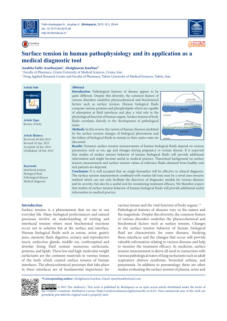

Author: James E Clark
This text informs and educates readers about the
challenges and risks associated with exposure to the
underwater environment. It particularly focuses on the
effects of breathing pressurized gases, such as inert gas
narcosis, on divers. It highlights the physiological impacts,
symptoms, and potential dangers of nitrogen narcosis and
the importance of understanding these effects to promote
safe diving practices.


Authors: Bennett MH, Weibel S, Wasiak J, Schnabel A,
French C, Kranke P
This paper provides an update on a Cochrane Review that
assesses the effectiveness and safety of adjunctive
hyperbaric oxygen therapy (HBOT) in the treatment of
individuals with acute ischemic stroke. It outlines the
objectives, search methods, selection criteria, data
collection and analysis, and main results of the review, and
determines whether HBOT can improve outcomes for
stroke patients by reducing brain cell death and swelling. It
also summarizes the findings from various randomized
controlled trials (RCTs) on this topic.



Authors: A. Sureda, J. M. Batle, J. A. Tur, A. Pons
This study evaluated the effects of repetitive hypoxia and
reoxygenation episodes during a 5-day apnea diving
period on various physiological parameters. Specifically,
the study focused on antioxidant defenses, oxidative
damage, and plasma xanthine oxidase activity in
peripheral blood mononuclear cells (PBMCs) of
professional apnea divers. It details the methodology,
including the timing of blood sample collection, and
summarizes the significant changes observed in glucose
levels, triglycerides, enzyme activities, and oxidative
markers.
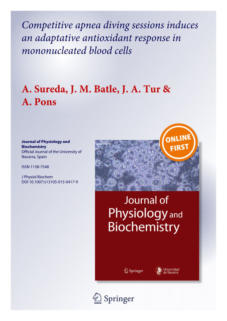

Authors: Peter Germonpré
This document provides an overview of diving medicine,
emphasizing its interdisciplinary nature and the
importance of prevention in maintaining diver health. It
also highlights the relevance of research from non-diving
medical fields, particularly in relation to Patent Foramen
Ovale (PFO), and discusses the complexities and ongoing
debates surrounding the treatment and prevention of
diving-related and non-diving-related illnesses associated
with PFO..
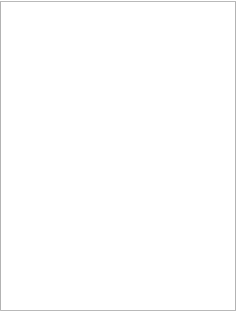


Authors: John W. Castellani, & Michael J. Tipton)
The text intends to comprehensively review the
physiological responses and external factors that impact
cold tolerance and physical performance, define cold
tolerance, discuss the effects of short-term and long-term
cold exposure, and examine various factors such as
habituation, anthropometry, sex, race, and fitness that
influence cold tolerance. Additionally, it seeks to explore
the impact of cold exposure on aerobic performance,
strength, and power and to discuss potential physiological
mechanisms and the concept of thermoregulatory fatigue.

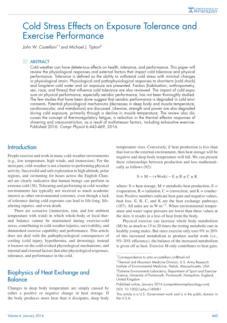

Authors: Otto F. Barak, Dennis Madden, Andrew T.
Lovering, Kate Lambrechts, Marko Ljubkovic, and
Zeljko Dujic
This study investigated the occurrence of arterial gas
emboli (AGE) in intracranial vessels of SCUBA divers to
understand how venous gas emboli (VGE) can become
AGE through intrapulmonary arterial-venous anastomoses
that open during exercise. The authors detail the
methodology, including the use of echocardiography and
Doppler techniques, and present the results, which
indicate that while some emboli of venous origin can
reach the brain, the risk of cerebral embolization is not
high in the studied population.
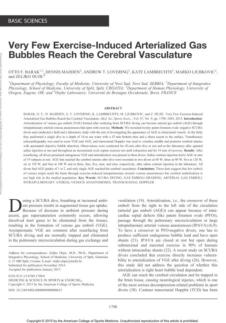

Authors: Peter Buzzacott, Virginie Papadopoulou, Adrian
Baddeley, Nadan M. Petri, Folke Lind
This paper discusses and analyzes the effects and risks
associated with deep decompression stops in recreational
technical diving. It examines the inert gas pressures in
different tissue compartments during a dive with deep
stops, using various decompression models, highlighting
potential risk factors for decompression sickness, and
emphasizing the need for further research to validate the
safety of deep decompression stops in diving profiles.

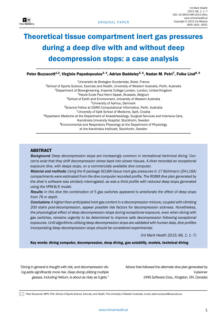

Author: S.F. Storti, E. Formaggio, M. Melucci, F. Faralli, L.
Ricciardi, G. Menegaz, L. Pastena
This study investigates the effects of oxygen on brain
activity in professional divers using new wireless
technologies, specifically a Bluetooth system, to measure
electroencephalographic (EEG) activity in a hyperbaric
chamber to understand how oxygen affects brain activity
by analyzing EEG rhythms under different conditions and
to provide a reference point for future research on
oxygen-sensitive subjects.
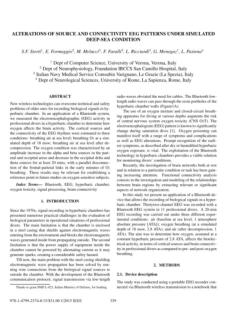

Author: F. Jay Haran, Amelia Lovelace
This paper evaluates the effects of inspired CO2 and
breathing resistance on neurocognitive performance and
postural stability during endurance exercise. It outlines the
methods used, including the conditions of the dives, the
assessments conducted, and the statistical analyses
performed. It concludes with the results, which indicate no
significant differences were found, and suggests directions
for future research.
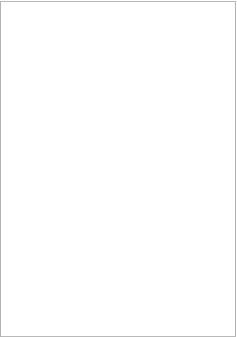


Authors: Ran Arieli and Abraham Marmur
This paper discusses scientific research findings related to
the behavior and growth of gas bubbles in ovine large
blood vessels following decompression. It describes the
experimental setup, observations, and measurements of
bubble nucleation and expansion at hydrophobic spots
on blood vessels, as well as the factors influencing bubble
growth, such as gas tension and flow regime. It also
suggests considerations for bubble-based decompression
models, emphasizing the importance of accounting for
both phases of bubble development.
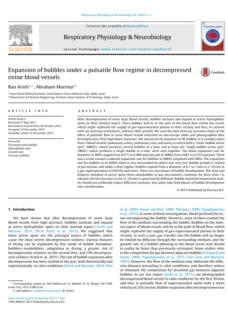

Authors: Erkan Sukuroglu, Güliz N. Güncü, Kamer Kilinc,
and Feriha Caglayan
This study investigates the potential use of nitric oxide
(NO) levels in biological fluids as biomarkers for evaluating
the risk of drug-induced gingival overgrowth to determine
whether NO levels in plasma, saliva, and gingival
crevicular fluid can serve as indicators for this condition,
particularly focusing on patients receiving specific
medications. It provides details on the methodology,
results, and conclusions of the study, highlighting the
potential diagnostic value of salivary nitrite and nitrate
levels in cases of phenytoin-induced gingival overgrowth.
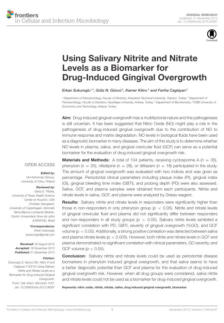



20 - Decompression induced bubble dynamics on ex-vivo fat and
muscle tissue surfaces with a new experimental set up
- Published by Science Direct

Authors: Virginie Papadopoulou, Sotiris Evgenidis, Robert
J. Eckersley, Thodoris Mesimeris, Costantino
Balestra, Margaritis Kostoglou, Meng-Xing Tang,
Thodoris D. Karapantsios
Vascular gas bubbles are often seen after scuba dives
using ultrasound, but how they form and grow during
decompression is unclear. An experiment was set up to
capture bubble growth on tissue during decompression.
Muscle and fat tissues were tested, and factors like bubble
density and growth rates were analyzed. Results showed
differences between tissue types and demonstrated how
bubbles nucleate and compete for gas.
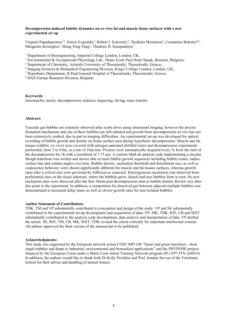



25 - Cutis marmorata in decompression illness may be cerebrally
mediated: a novel hypothesis on the aetiology of cutis
marmorata
- Published by Diving and Hyperbaric Medicine

Author: James Bell, Paul A. Thombs, William J. Davison,
Lindell K. Weaver
Cutaneous decompression sickness (DCS) is often seen as
mild, caused by bubbles in skin blood vessels or tissue
saturation during decompression. A 30-year-old female
diver had skin DCS three times after low-stress dives. Her
skin lesions resembled those in pigs with cerebral air
embolism, suggesting a shared cause. This leads to the
hypothesis that cutaneous lesions are linked to the brain,
indicating that cutaneous DCS may be more severe than
previously thought. Further research is needed on the
mechanisms behind cutaneous DCS.




51 - Residual oxygen time model for oxygen partial pressure near
130 kPa (1.3 atm)
- Published by Undersea & Hyperbaric Medical Society

Author: Barbara shykoff
A two-part model predicts pulmonary oxygen toxicity risk
after dives with oxygen pressure around 130 kPa. It helps
plan dives with controlled risk. Data show injury is
accumulative between dives, with recovery starting after
delays. The probability formula relates dive duration to
toxicity risk. For multiple dives, it calculates an equivalent
dive duration. A recovery model was developed based on
residual time. The model was validated with 1,352 dives,
showing specific standard deviations for resting and
exercising divers.
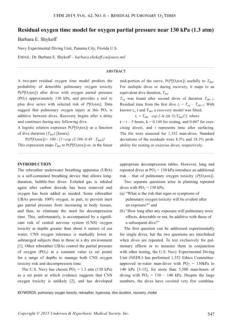



58 - Development of a pulmonary oxygen toxicity risk calculator for
repeated dives with PO2 = 1.3 atm
- Published by the US Navy experimental Diving Unit.

Author: Barbara shykoff
A two-part model predicts the likelihood of pulmonary
oxygen toxicity after dives with oxygen pressure around
130 kPa. It shows that lung injury from oxygen
accumulates across dives, with recovery starting after a
delay. The model includes a logistic equation connecting
dive duration to pulmonary oxygen toxicity. For multiple
dives, it relates symptoms to equivalent dive duration. A
recovery model calculates residual time based on dive
factors. The model was validated with 1352 dives,
showing acceptable accuracy for specific oxygen
pressures and durations.
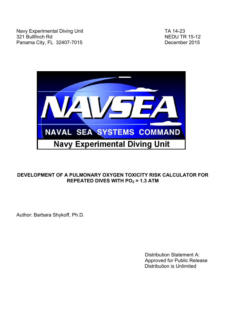



05 - Techniques actuelles de sauvetage des sous-marins. Contexte
de mise en oeuvre du Nato Submarine Rescue System.
- Published by Medecine et armees

Authors: J.-E. Blatteau, C. Peny, F. Leclercq, C. Robinet, E.
Gempp, P. Louge, S. de Maistre, J.-M. Pontier, P.
Constantin, M. Hugon
France has developed a new procedure to optimize the
NATO Submarine Rescue System (NSRS) for collective
rescue of sunken submarine crews. This operation
requires healthcare personnel to understand the main
risks, including water ingress, oxygen-related pulmonary
toxicity, and decompression accidents during the return
to the surface. The goal is to bring shipwrecked
personnel and accompanying personnel to the surface
with maximum safety.


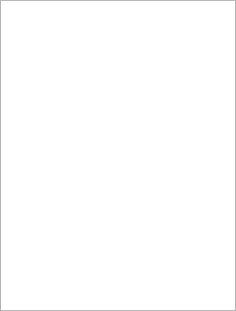

06 - Inert gas narcosis disrupts encoding but not retrieval of long
term memory
- Published by Science Direct

Authors: Malcolm Hobbs, Wendy Kneller
Inert gas narcosis, caused by increased ambient pressure,
can impair long-term memory (LTM) by disrupting
information encoding, retrieval, or both. A study in divers
underwater tested the effect of learning-recall pressure
and levels of processing on free-recall of word lists. Results
showed that free-recall memory was significantly impaired
when words were initially learned at high pressure, while
retrieval was unaffected. This suggests that narcosis
disrupts information encoding into LTM, while retrieval
remains unaffected.




15 - Job Exposure Matrix for Electric Shock Risks with Their
Uncertainties
- Published by Environmental Research and Public Health - MDPI

Authors: Ximena P. Vergara, Heidi J. Fischer, Michael
Yost, Michael Silva, David A. Lombardi, and
Leeka Kheifets
This study updates an electric shock job exposure matrix
(JEM) for 501 occupational titles, adding three new
dimensions: median proportion, 25th percentile, and
75th percentile of those experiencing occupational
electric shocks in a working lifetime. The new JEM
provides consistent exposure estimates, moving from
qualitative to quantitative measures, and demonstrates
the impact of cut point selection on exposure
assignment.
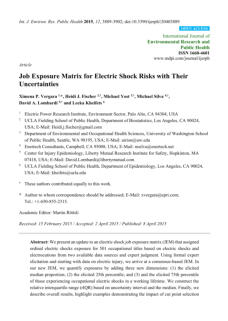


19 - The effect of hyperbaric air on the electric activity of neuronal in
vitro networks
- Published by Science Direct

Authors: Marco Stubbe, Matthias Nissen, Jessica
Schroeder, Jan Gimsa
A pressurized measuring chamber was designed to
record pressure effects on the electrical activity of
neuronal networks in NMRI mice. The study found that
pressure increased the total spike rates (TSRs) in two cell
culture media with different compositions. The TSR
increased by 19% after a pressure increase to 2 bar and
remained stable at 4 bar. After decompression to 1 bar,
activities decreased to 76% and 101% of their respective
control levels. This new approach provides new access
to exploring the neuronal effects of hyperbaric breathing
gases.

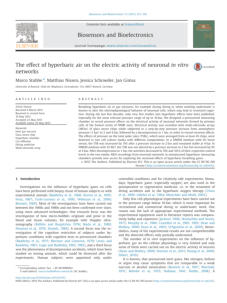


24 - Exercise-induced cardiovascular responses during combined
normobaric vs. hypobaric and normoxic vs. hypoxic acute
exposures in military air pilot trainee
- Published by the American Physiological Society

Authors: Nicolas Bourdillon, Mathias R. Aebi, Denis Bron,
Grégoire P. Millet
The study examined the effects of hypobaria on
ventilatory, cardiovascular, and muscle oxygenation
during exercise in normoxia and hypoxia. Eighteen
healthy air pilot trainees performed a 6-minute moderate-
intensity cycling exercise in four randomized conditions:
normobaric normoxia, hypobaric normoxia, normobaric
hypoxia, and hypobaric hypoxia. Results showed that
SpO2 and brain oxygenation were significantly lower in
hypobaric hypoxia, and ventilation was higher in
hypobaric hypoxia. The specific effects of hypobaria in
normoxia were lesser than in hypoxia.

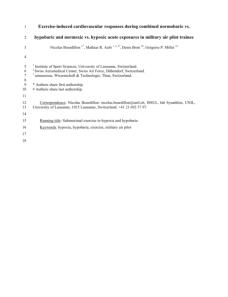


32 - Diving bradycardia of elderly Korean women divers in cold
seawater: a field report
- Published by Extreme physiology & medicine - BMC

Authors: Joo-Young Lee, Hyo-Hyon Lee, Siyeon Kim,
Young-Joon Jang
Breath-hold diving is prevalent among women divers
worldwide, including in Korea and Japan, but most use
SCUBA. With over 80% of haenyeos in their sixties or
older, it's predicted to end in a few decades. This study
aims to explore diving patterns and heart rate in older
Korean women.

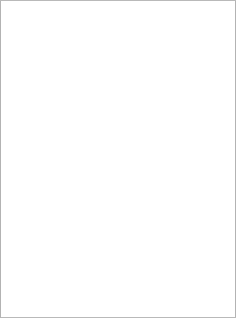

45 - Alternate electrode placement for whole body and segmental
bioimpedance spectroscopy
- Published by IOP Sciences

Authors: T L Grisbrook, P Kenworthy, M Phillips, P
M Gittings, F M Wood, and D W Edgar
Bioimpedance spectroscopy (BIS) is used to monitor
body fluid and composition in both healthy and clinical
populations. However, alternate electrode positions have
not been reported yet. This study assessed three
alternate electrode placements for whole body BIS,
upper and lower body segmental BIS. Results showed
that if drive and sense electrodes are moved to ventral
positions, whole body BIS variables are comparable to
standard electrode positioning. Alternate lower limb
electrode position significantly altered resistance and
predicted BIS variables.












